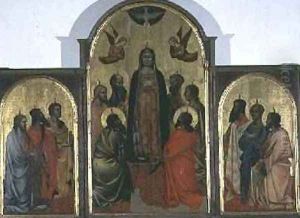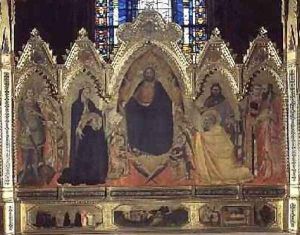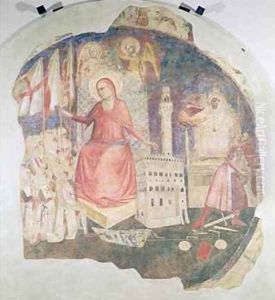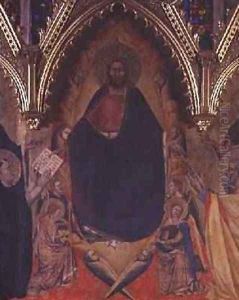Andrea Orcagna Paintings
Andrea di Cione, known as Orcagna, was an influential Italian painter, sculptor, and architect active during the mid-14th century in Florence. His exact birth date is not known, but it is generally believed to be around 1308. Orcagna is considered one of the most prominent artists of his time, encapsulating the Gothic style's transition to the early Renaissance. His works are characterized by their detailed narrative and emotive intensity, blending religious themes with a keen observation of human nature and a sophisticated use of space and perspective.
Orcagna's artistic career was diverse, as he excelled in painting, sculpture, and architecture, showcasing his versatility and innovation. In painting, one of his most famous works is the altarpiece of the Strozzi Chapel in Santa Maria Novella, Florence, which displays his mastery in depicting complex biblical scenes with a profound sense of spirituality and emotion. His frescoes in the Campo Santo, Pisa, are also celebrated for their dramatic expressiveness and depth.
As a sculptor, Orcagna's contribution to the Orsanmichele Tabernacle, where he demonstrated an exceptional ability to convey the divine and the human through marble, stands as a testament to his skill and vision. This work, in particular, highlights his capabilities in creating figures that are both idealized and deeply human, imbued with a sense of grace and sanctity.
Orcagna was also noted for his architectural works, where he served as a capomaestro (chief architect) of the Florence Cathedral for a time. His architectural legacy, however, is most closely associated with his contributions to the design and decoration of the Loggia dei Lanzi in Florence.
Throughout his career, Orcagna was influenced by the likes of Giotto and Andrea Pisano, yet his work transcends these influences, marking a distinct step towards the humanism and realism that would define the Renaissance. His ability to integrate painting, sculpture, and architecture into cohesive works of art was revolutionary for his time and contributed significantly to the development of Italian art.
Orcagna's death in 1368 marked the end of an era in Florentine art. His legacy, however, has endured as a bridge between the medieval and Renaissance periods, illustrating the evolution of artistic thought and technique in 14th-century Italy. Orcagna's work continues to be studied and admired for its intricacy, emotional depth, and pioneering approach to art.












